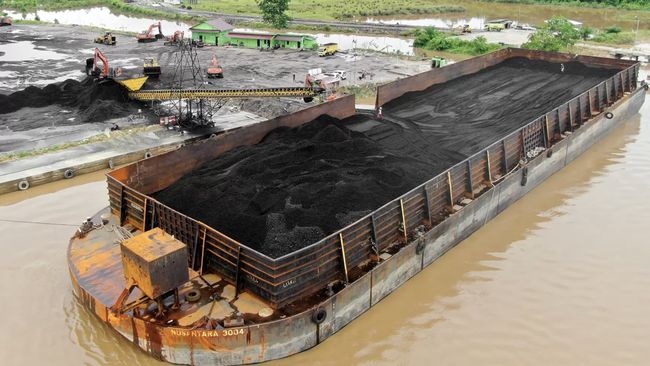Jakarta, CNBC Indonesia – Coal prices are on the rise again. The temperature of Europe which will be colder in the next 10 days is the main support for the movement of the black sand.
During trading on Friday (24/11/2022), the coal price for the December contract on the Newcastle ICE Market was recorded at USD 360.8 per tonne. The price strengthened by 1.16%.
With Friday’s strengthening, coal closed trading in the green zone in seven days. Within a week, coal prices increased by 7.06%. point to point. Coal prices also never fell last week.
Coal’s strengthening by 7.06% last week also extended the weekly uptrend. Two weeks ago, coal prices rose 12.5%.
Rising coal prices in two weeks is good news. This is because the price of black sand had fallen in the previous four weeks and fell below US$300 per ton.
In one month the price of coal fell again by 5.8%, but in one year it flew by 95.6%.
The strengthening of coal prices this week was triggered by two factors, namely the threat of the Russian company Gazprom to cut off gas supplies via the Ukrainian route and the forecast that the air temperature in Europe will be colder in the next 10 days.
As is known, Gazprom has threatened to cut off gas supplies through Ukraine starting Monday next week (11/28/2022).
Gazprom previously stopped supplying gas to Europe through the Nordstream 1 submarine network. However, Gazprom is still sending gas through two routes, namely through Ukraine and Turkstream.
Gazprom has threatened to stop shipments because it suspects Ukraine of diverting Gazprom shipments to Moldova via this route.
Gazprom’s threat is troubling because it comes amid Europe’s efforts to recover natural gas supplies for the winter. Temperatures in parts of Europe will also drop dramatically in the coming days.
Reported by Bloomberg, Maxar Technologies Inc expects temperatures in Europe to be colder than previously expected by December.
It is feared that cold temperatures will increase the use of electricity in such a way as to deplete the energy supply. Maxar expects temperatures across much of Europe to be colder over the next couple of weeks.
The temperature in Berlin is expected to reach minus (-) 3.5 degrees Celsius on December 3. Temperatures in major European cities such as Amsterdam, Helsinki and Stockholm will also be much colder than normal.
In the autumn of this year, the temperature in Europe is warmer than in previous years, making the region can reduce the use of gas.
Gas storage in Europe now averages around 95%. The supply is expected to run out quickly over the next 10 days.
Several European regions were initially expected to experience warm winters, such as Spain, France and Portugal. However, the latest weather forecasts indicate that the temperature in these countries will drop dramatically in the coming weeks.
Conversely, the anomaly occurs in northern Norway and Sweden because they will experience warmer winters.
CNBC INDONESIA RESEARCH TEAM
Next article
Coal prices finally rise, but slightly
(and and)


